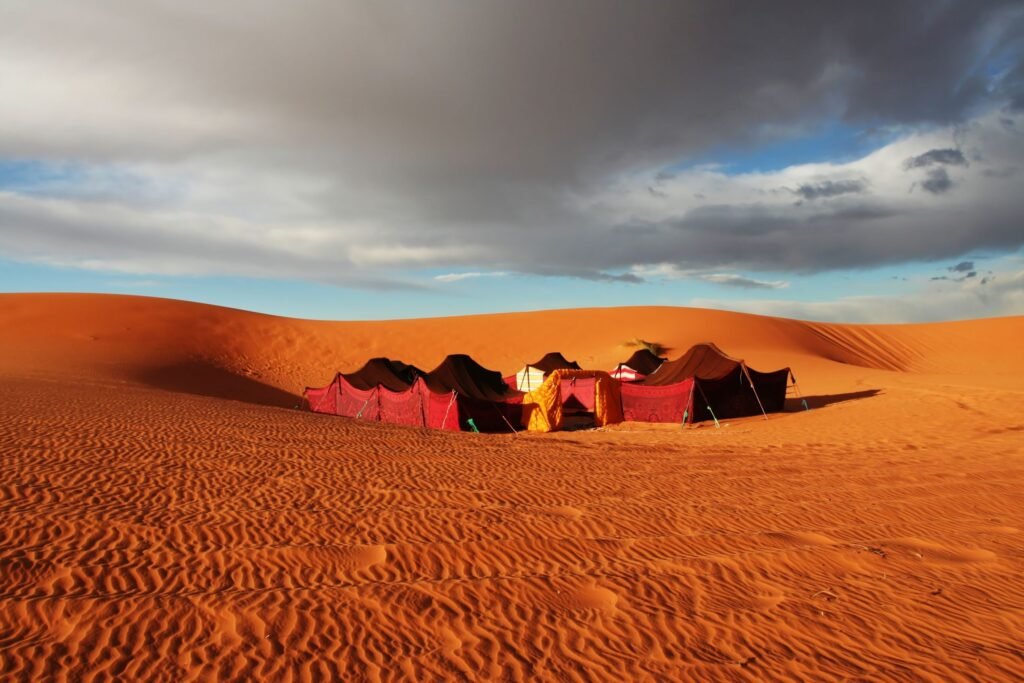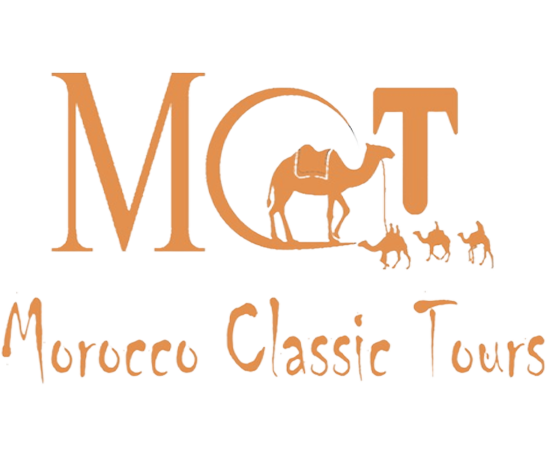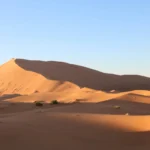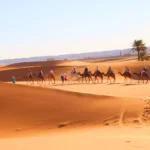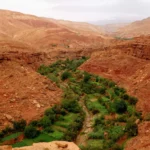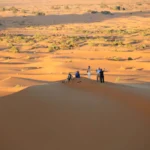Morocco, a land of vibrant colors, rugged landscapes, and rich cultural heritage, is home to some of the world’s last remaining nomadic communities. These nomads, often referred to as the “wandering tribes,” have preserved a way of life that is deeply connected to the land, the seasons, and the rhythms of nature. In this blog, we’ll take you on a journey into the lives of the Nomads in Morocco, exploring their traditions,
challenges, and the enduring spirit that keeps their ancient lifestyle alive.
Who Are the Nomads of Morocco?
The nomads of Morocco are the guardians of a centuries-old way of life. They are primarily Amazigh (Berber) tribes who have roamed the country’s vast and varied landscapes for generations. From the towering peaks of the Atlas Mountains to the endless sands of the Sahara Desert, these communities have adapted to some of the harshest environments on Earth.
Their lives revolve around their herds—camels, goats, and sheep—which provide them with food, clothing, and a means of survival. But being a nomad in Morocco is more than just a lifestyle; it’s a philosophy. It’s about living in harmony with nature, moving with the seasons, and preserving traditions that have been passed down through countless generations.
Where Do the Nomads Live?
The nomads of Morocco are scattered across the country’s most remote and
unforgiving regions. Here’s a glimpse into their world:
The Atlas Mountains: In the rugged terrain of the Atlas Mountains, nomads like the Ait Atta tribe live in goat-hair tents. Every year, they embark on a 15-day journey from their homeland in Jbel Saghro to the High Atlas in search of greener pastures. When winter approaches, they make the same journey back, following a cycle that has defin their lives for centuries.
The Sahara Desert: In the vast expanse of the Sahara, nomads live in small, isolated communities. Around Erg Chebbi and Erg Chigaga, you’ll find families who have mastered the art of survival in one of the world’s most extreme environments. Their lives are a testament to resilience and adaptability.
Caves and Valleys: In regions like Boutghrar and the Dades Valley, some nomads have chosen to live in caves. These semi-nomadic families still rely on their herds but have settled in one place, blending tradition with a more stationary lifestyle.
Daily Life of Moroccan Nomads
Life as a nomad is both simple and demanding. Every day is a balance between survival and tradition:
- Women: The backbone of nomadic life, women are responsible for weaving carpets, preparing meals, and tending to the children. They are also skilled artisans, creating intricate henna designs and crafting the very tents that shelter their families.
- Men: Men take care of the herds, guiding them to the best grazing spots. They also travel to weekly markets (souks) to trade livestock and gather supplies. These journeys are not just about commerce; they’re a chance to connect with other families and share news.
- Children: Nomad children grow up learning the skills they’ll need to survive. They help with chores like fetching water and herding goats, but education remains a challenge. Schools are often far away, and many families struggle to balance tradition with the need for modern learning.
Traditions and Culture
The nomads of Morocco are the keepers of a rich cultural heritage. Their traditions are woven into every aspect of their lives:
- Crafts: Nomad women are renowned for their weaving skills, creating beautiful carpets and blankets that tell stories of their history and beliefs.
- Food: Meals are simple but hearty, often centered around tagines and bread baked over an open fire. Every dish is a reflection of their resourcefulness connection to the land.
- Music and Dance: Music is an integral part of nomadic life. Around the fire night, families gather to sing traditional songs and dance, keeping their culture alive through storytelling and celebration.
Challenges Facing Morocco’s Nomads
While the nomadic lifestyle has endured for centuries, it is not without its challenges:
- Climate Change: Droughts and unpredictable weather patterns are making it harder for nomads to find water and grazing land for their herd
- Modernization: As Morocco develops, many nomads are choosing to settle in villages or cities, leaving behind their traditional way of life.
- Education: Providing education for nomad children is a complex issue. While some organizations have set up tent schools, the transient nature of nomadic life makes it difficult to maintain consistent learning opportunities.
How Tourism is Helping Nomads
Tourism has become a lifeline for many nomadic communities. By opening their homes to travelers, nomads are able to share their culture and traditions while earning a sustainable income. Experiences like homestays, camel treks, and guided tours offer visitors a chance to connect with these remarkable communities on a deeper level. For example, trekking in the Atlas Mountains or the Sahara Desert often involves hiring local nomads as guides. Their intimate knowledge of the land ensures a safe and
enriching experience for travelers, while also providing nomads with a steady source of income.
Why We Must Preserve Nomadic Culture
The nomads of Morocco are more than just a link to the past; they are a living reminder of humanity’s ability to adapt and thrive in even the harshest conditions. Their way of life is a testament to resilience, resourcefulness, and a deep respect for nature. As travelers, we have a responsibility to support these communities in a way that is respectful and sustainable. By choosing ethical tourism experiences and learning about their culture, we can help ensure that the Nomads in Morocco continue to thrive for generations to come.
Experience the Nomadic Life
If you’re inspired to learn more about the nomads of Morocco, consider embarking on a journey that takes you into their world. Whether it’s a homestay in the Atlas Mountains, a camel trek in the Sahara, or a cultural immersion program, these experiences offer a unique opportunity to connect with a way of life that is as ancient as it is enduring.
Let’s celebrate the nomads of Morocco—not just as a relic of the past, but as a vibrant and vital part of our shared human story.
